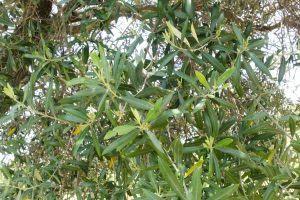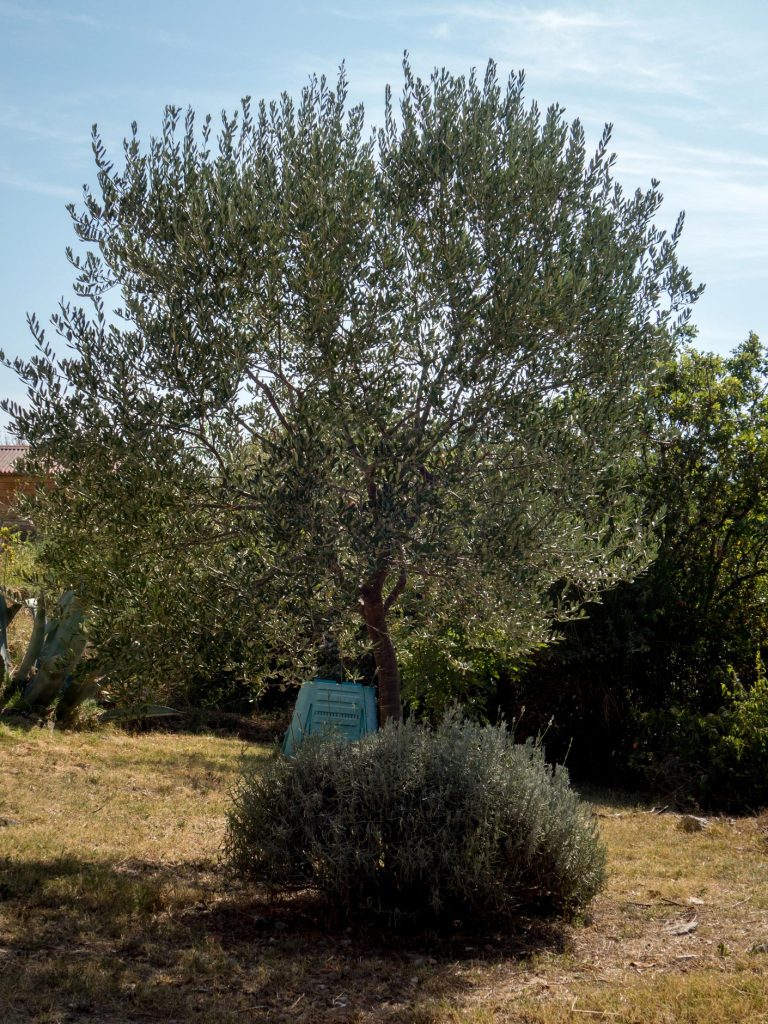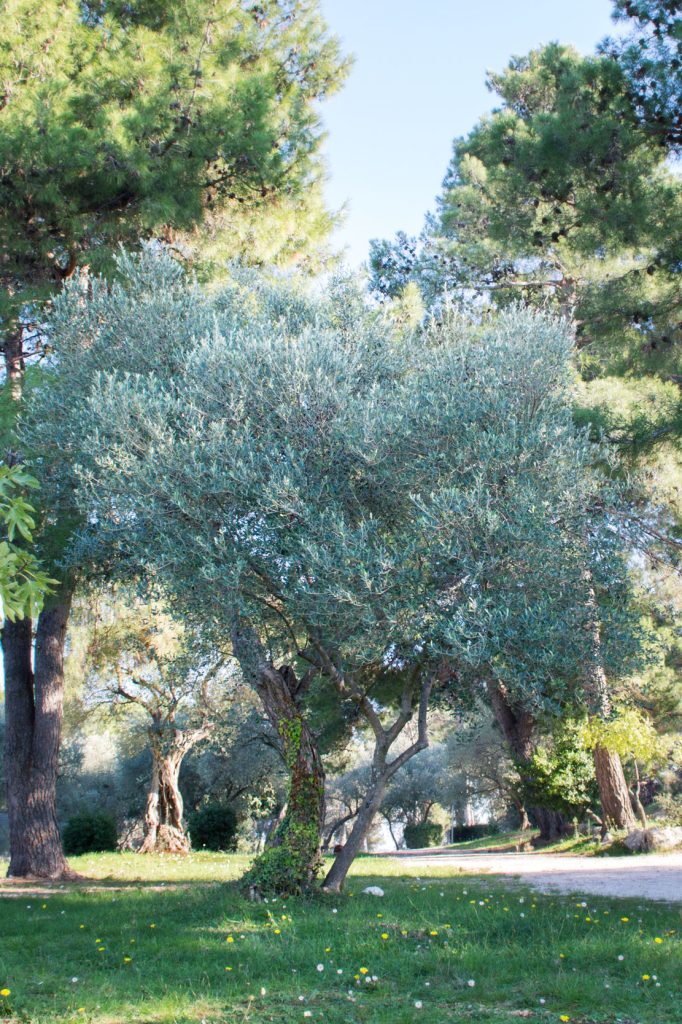Olive Tree (Olea europaea)
The Olive Tree, Olea europaea, is a symbol of the Mediterranean landscape, known for its resilience and longevity. Native to the Mediterranean Basin, this evergreen tree has been cultivated for thousands of years for its fruit and oil. They typically grow between 26 to 49 feet (8 to 15 meters) tall, though they often remain smaller due to pruning. Their twisted, gnarled trunks and silvery-green leaves make them visually distinctive.
The leaves of the olive tree are narrow, lance-shaped, and leathery, with a dark green upper side and a silvery underside. These leaves help the tree conserve water in dry climates. The tree produces small, fragrant white flowers, which develop into olives after pollination. The olives themselves vary in color from green to black, depending on their ripeness and variety. Olive trees have a deep, extensive root system that allows them to access water even in arid conditions, contributing to their drought resistance.
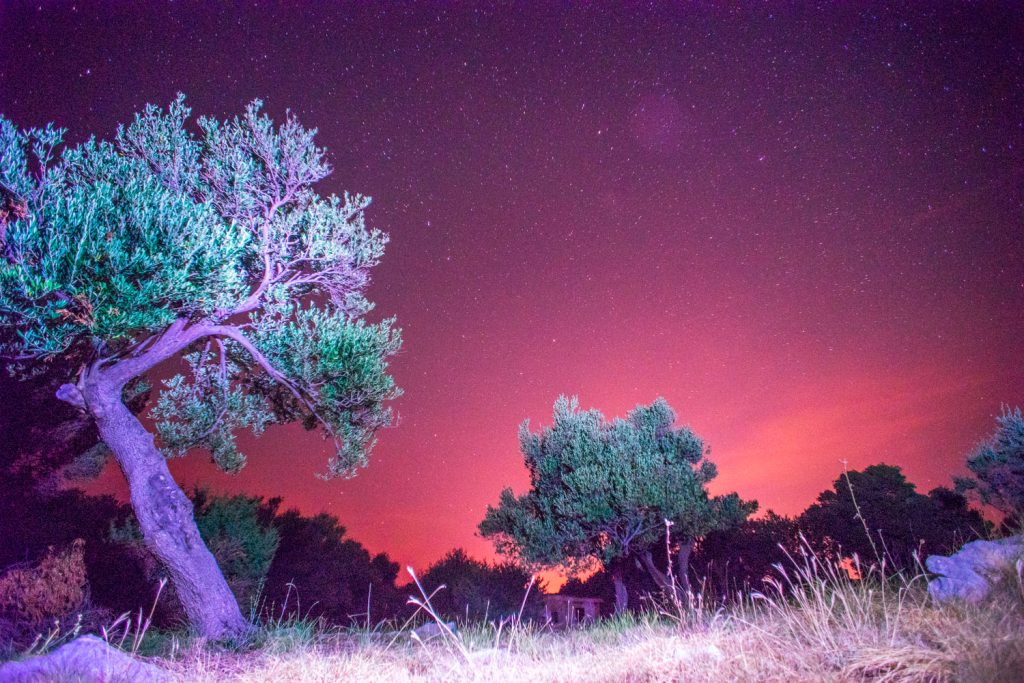
The Olive Tree is exceptionally long-lived, with some specimens over 1,000 years old. Its ability to regenerate from the stump or roots after being cut down or damaged is remarkable. This resilience makes it well-suited to the challenging conditions of the Mediterranean climate, with its hot, dry summers and mild, wet winters.
Olive trees are cultivated mainly for their fruit, which is used to produce olive oil, a staple of the Mediterranean diet. Their wood is also prized for its hardness and beautiful grain, often used in carving and furniture making.
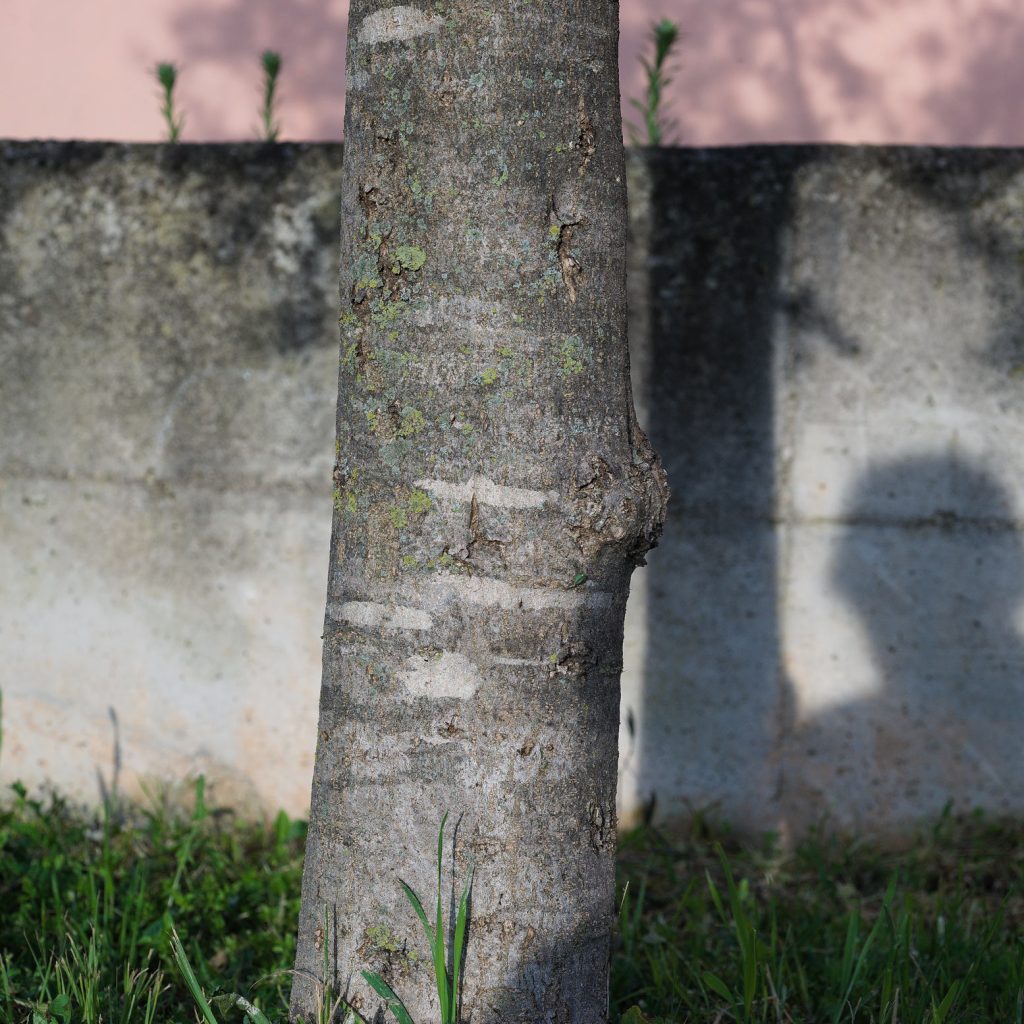
Scientific Classification of Olive Tree
| Kingdom | Plantae |
| Clade | Angiosperms |
| Clade | Eudicots |
| Order | Lamiales |
| Family | Oleaceae |
| Genus | Olea |
| Scientific Name | Olea europaea |
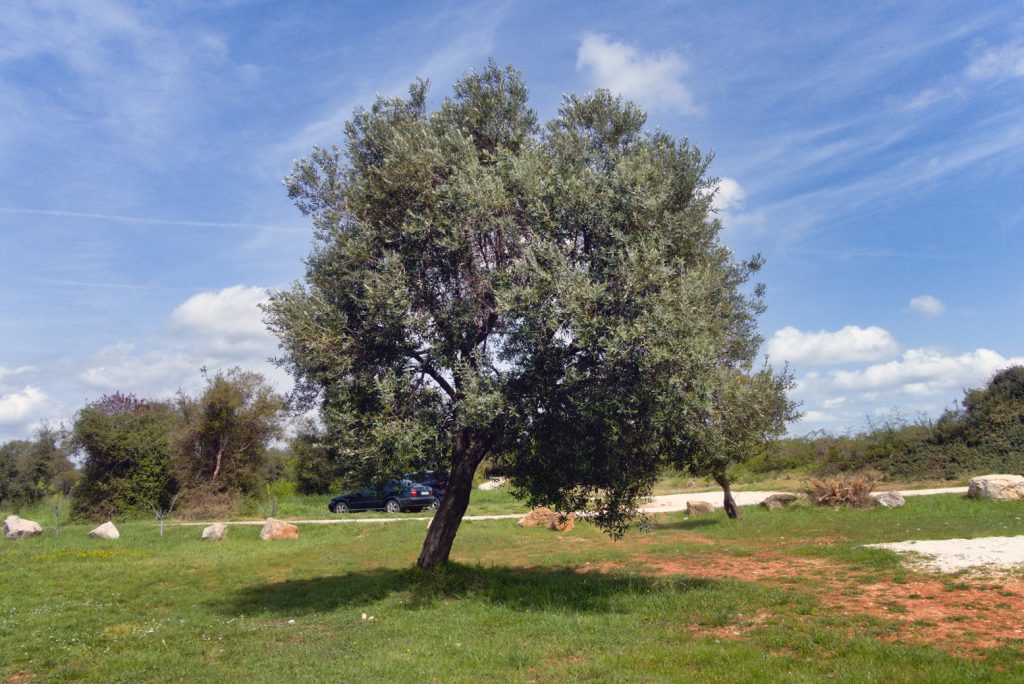
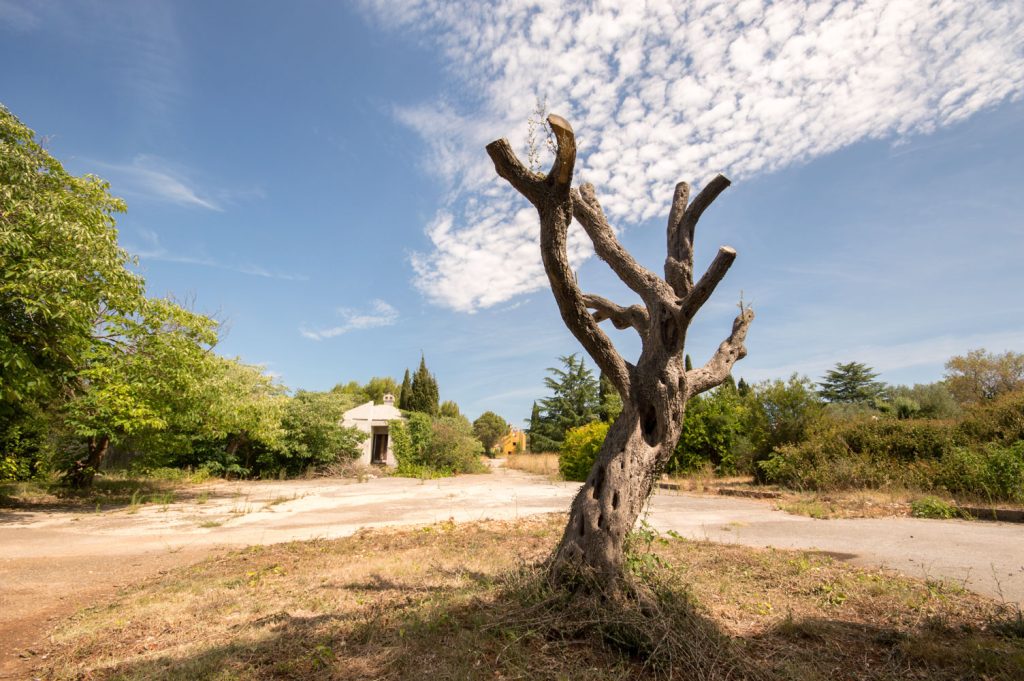
Begins New Growth
Quick Information
| Plant Type | Evergreen tree |
| Identification | Height: Typically 26 to 49 feet (8 to 15 meters) tall Leaves: Narrow, lance-shaped, dark green on top, silvery underneath, 4-10 cm long Stem: Gnarled, twisted trunk with gray, rough bark Flowers: Small, fragrant white flowers in clusters Roots: Deep, extensive root system Growth Habit: Broad, spreading crown Crown: Rounded and dense |
| Distribution | Native to the Mediterranean Basin, widely cultivated in Mediterranean climates worldwide |
| Habitat | Grows in rocky, well-drained soils; commonly found in coastal areas, hillsides, and valleys |
| USDA Hardiness Zone | 8 through 11 |
| Growth Rate | Slow to moderate; grows about 30-60 cm (12-24 inches) per year |
| Lifespan | Extremely long-lived, often over 1,000 years |
| Growing Conditions | Sunlight: Full sun Soil: Well-drained, rocky or sandy soil; tolerant of poor soils Water: Drought-tolerant, requires minimal watering once established |
| Drought Tolerance | Very high |
| Diseases | Susceptible to olive knot, verticillium wilt, and fungal infections |
| Pests | Olive fruit fly, scale insects, and olive moth |
| Reproductive System | Monoecious; male and female flowers on the same tree |
| Propagation | Through seeds, cuttings, or grafting |
| Wildlife Value | Provides food for birds and mammals; supports insects and other wildlife in its habitat |
| Uses | Olive oil production, olives for consumption, wood for carving and furniture, ornamental use in landscaping |
| IUCN Conservation Status | Not threatened; widely cultivated and managed |
